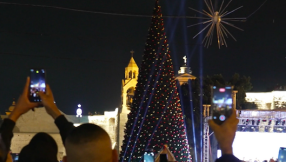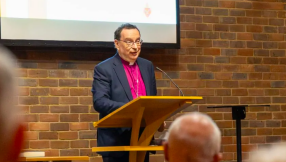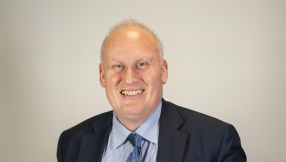
(CP) Deaths by drugs, alcohol and suicide, known as "deaths of despair," dramatically increased among middle-aged white Americans in the late 20th century due to lower participation in organized religion that was preceded by a repeal of blue laws that prohibited commercial activities on Sunday, a new study from the National Bureau of Economic Research shows.
The study, a working paper titled "Opiates of The Masses? Deaths of Despair and The Decline of American Religion" by Tyler Giles, Daniel M. Hungerman and Tamar Oostrom, uses data from the General Social Survey to show that religious practice has a significant impact on deaths of despair.
"We show that the initial rise in deaths of despair in the US was preceded by a large decline in organized religious participation and that both trends were driven by white middle-aged Americans," the researchers wrote in their conclusion of the study.
"We know of no other cultural phenomenon involving such large, widespread changes in participation prior to the initial rise in U.S. mortality, nor do we know of any other phenomenon that matches the seemingly idiosyncratic patterns observed for mortality: seen for both men and women, but not in other countries, and in both rural and urban settings, but driven primarily by middle-aged, less educated white individuals," they explained. "We also show that religiosity and the rate of deaths of despair are negatively correlated across states; states with high levels of religiosity have suffered less from mortality due to alcohol, suicides, or drug poisonings."
The findings by Giles, Hungerman and Oostrom, provide deeper insight into previous research on deaths of despair.
In "Mortality and Morbidity in the 21st Century," for example, Princeton University's Anne Case and her Nobel Prize winner husband, Angus Deaton, followed up on their groundbreaking 2015 paper that showed a shocking increase in midlife mortality among white Americans, examining patterns and contributing factors to deaths of despair.
They suggested poor mortality among middle-aged working-class whites might have been triggered by the "progressively worsening labor market opportunities at the time of entry for whites with low levels of education."
Middle-aged white Americans with a high school diploma or less have experienced increasing midlife mortality since the late-1990s due to "deaths of despair," the study said. A slowdown in progress against death from heart disease and cancer was also noted as a contributing factor.
Case and Deaton said they examined suggestions that the deaths among working-class middle-aged whites were the result of poor incomes, but that factor alone could not comprehensively explain the phenomena.
"Many commentators have suggested that the poor mortality outcomes can be attributed to slowly growing, stagnant, and even declining incomes; we evaluate this possibility, but find that it cannot provide a comprehensive explanation. In particular, the income profiles for blacks and Hispanics, whose mortality has fallen, are no better than those for whites," they said. "Nor is there any evidence in the European data that mortality trends match income trends, in spite of sharply different patterns of median income across countries after the Great Recession."
In their research, Giles, Hungerman and Oostrom found that states with larger decreases in religiosity showed larger gains in the rate of deaths of despair.
"Using shocks based on the repeal of blue laws, we then demonstrate that negative shocks to religious practice had relatively large impacts on deaths from poisonings, suicides, and liver cirrhosis for middle-aged Americans in the late 20th century," the researchers said.
They also made it clear that the benefits of attending church came from its value as a cultural practice rather than any personal devotion. And since the widespread dismantling of church attendance from American culture, no other institution has emerged to match the value society gained from attending church.
"The impact that we witness seems to be driven by the decline in formal religious participation rather than in belief or personal activities like prayer. These results underscore the importance of cultural institutions such as religious establishments in promoting well-being," the researchers noted. "Whether other types of voluntary or community activities could have similar large-scale effects on health outcomes is unknown and represents an excellent topic for future research."













